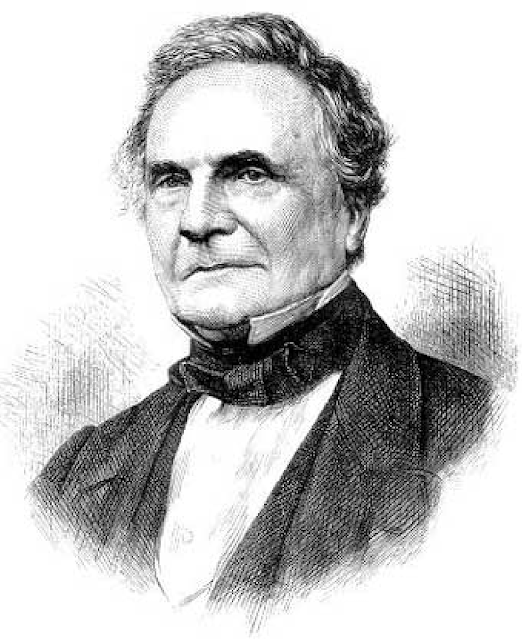 |
| Charles Babbage |
In the beginning, there was a great vision for a new kind of computing device that could be owned and operated by individuals in their homes and offices. This vision was born out of the work of many great minds in the fields of engineering, mathematics, and computer science.
And so it was that in the early 1970s, a group of computer enthusiasts came together to form a company called Micro Instrumentation and Telemetry Systems (MITS). They produced a kit for a small, programmable calculator called the Altair 8800, which was the first commercially successful personal computer.
The earliest roots of computing, which can be traced back to the work of pioneering mathematicians like Charles Babbage and Ada Lovelace in the 19th century. Babbage's Analytical Engine, designed in the 1830s, was a mechanical computer that could perform complex calculations, while Lovelace wrote programs for the machine, making her the world's first computer programmer.
 |
| Church and Turing |
But it was not until the 20th century that computing began to take on its modern form. In the 1930s, a group of mathematicians and logicians, including Alan Turing and Alonzo Church, developed the theoretical foundations of computing. Turing, in particular, played a key role in breaking German codes during World War II and in designing the first electronic computers in the post-war period.
From there, computing continued to evolve rapidly, with the development of programming languages, operating systems, and other key technologies. But for many years, computers were large, expensive machines that were primarily used by governments, universities, and corporations.
It wasn't until the early 1970s that the personal computer as we know it today began to emerge. This was due in large part to the work of a group of computer enthusiasts who founded a company called Micro Instrumentation and Telemetry Systems (MITS). They produced a kit for a small, programmable calculator called the Altair 8800, which became the first commercially successful personal computer.
This breakthrough was followed by the introduction of other key innovations, such as the Apple II, which was designed by Steve Wozniak and Steve Jobs in a garage in California. The Apple II was the first personal computer to feature color graphics and sound, and it helped to popularize the idea of the home computer.
Throughout the 1980s and 1990s, personal computers continued to evolve, with the introduction of more powerful processors, better graphics and sound, and new software applications. PCs became a ubiquitous part of modern life, used for everything from word processing and email to gaming and social media.
Today, personal computers have become even more powerful and versatile, with advanced features like touch screens, voice recognition, and artificial intelligence. They are used by millions of people around the world to work, learn, create, and connect.
And so, the story of the personal computer is a tale of innovation, perseverance, and human ingenuity. It is a story that reflects the boundless potential of the human mind, and the amazing things we can achieve when we work together towards a common goal.
Source: Some or all of the content was generated using an AI language model

No comments:
Post a Comment
Contact The Wizard!
(he/him)